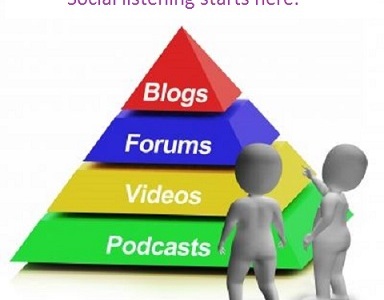Ever run out of ideas to share on social or, worse, get writer’s block? Often, your audience holds the key to what you should be sharing…
View the original thread on Quora: What are good brainstorm techniques to come up with social media content?
My answer:
Phenomenal answer by Kasper Kazzual Vancoppenolle, to be fair.
Of all of those points, getting into bed with your audience is the one that rings truest, here.
I firmly believe that listening to your audience (not thinking that you know best when it comes to what they want) is the best inspiration for producing or curating content.
More on that, here: How do I get known or promote my online profile?
Owned Content
If we have a purpose for what we produce, it helps us define and refine our answers. If we’re best-guessing, there’s room to go off at all different tangents, thus easier to meander from our content marketing goals.
Staying consistent with our message also helps us attract an engaged, loyal audience.
As more brands see the need for social engagement, we’re asked more and more to measure our activity, prove our clients’ ROI.
As direct sales are not attributable to social media activity (at least not in volume), interaction and brand mentions are one way to see how effective our campaign is.
Google analytics (another must-read source for discovering keywords and phrases that your visitors are finding your site for) can also help us determine what is (and isn’t) effective.
Produce our own or curate content?
Without content, curated or authored, there is no strategy. So your social listening activity has to affect the content you write or curate from the outset.
Pareto’s 80/20 rule applies as much to social as any other aspect of business. As in, for every two posts of our own we share, we should be curating eight relevant other posts from our industry space.
To help define a robust curation strategy, we need to see what our peers, industry thought leaders and competition are sharing. And, of course, the reaction that content is garnering with their audiences.
I’m not suggesting be a copycat; heck, you wouldn’t be in business without a USP that your customers love. But if those who share your industry space find certain content shareworthy, the likelihood is that your audience will, too.
But…
…there are always going to be the leading blogs in your industry. No doubt many of those who inhabit your niche share that same content.
However, there are likely to be lesser known websites with at least as influential and relevant content. In my experience, the seeds for content on authoritative blogs are often sown by smaller articles found elsewhere in their niche.
So why not try Google Alerts as an alternative means to fetch relevant content?
It may well be that you can beat your competition to the punch, or even produce that killer article before the authoritarians can steal a march. Now that is worth brainstorming.
More on Google Alerts, here: Where can I find articles on International Social Media Strategies?
Image: Social Media Pyramid Showing Blogs Foruns And Podcasts by Stuart Miles freedigitalphotosdotnet.jpg






